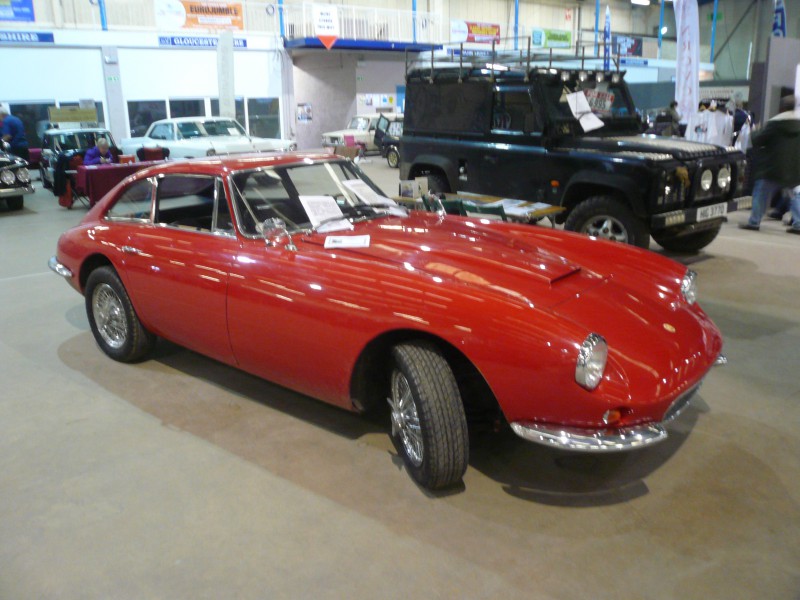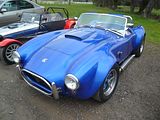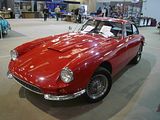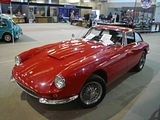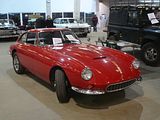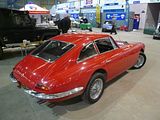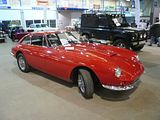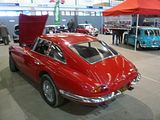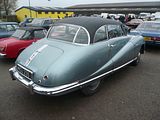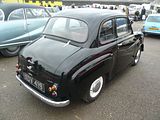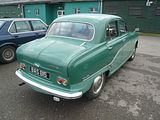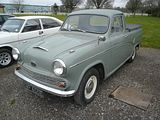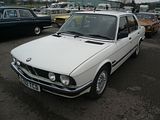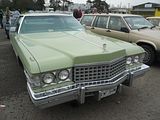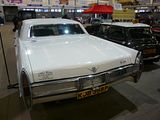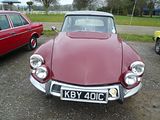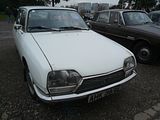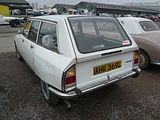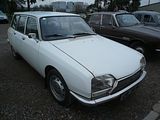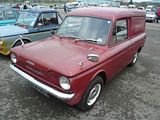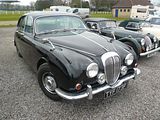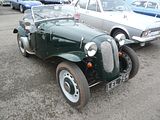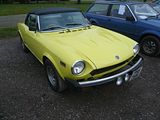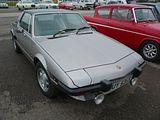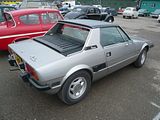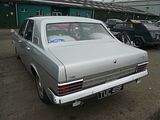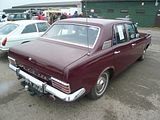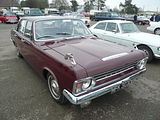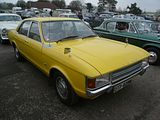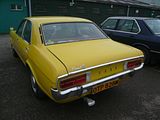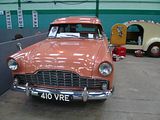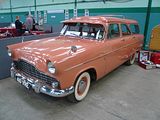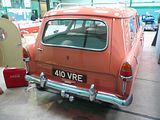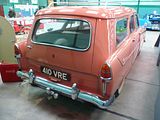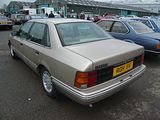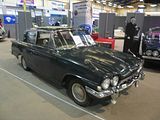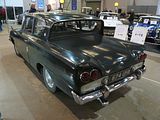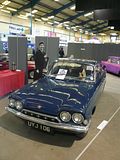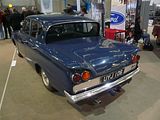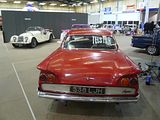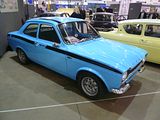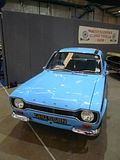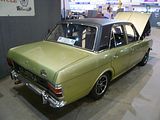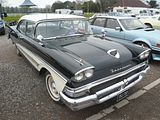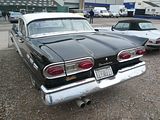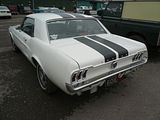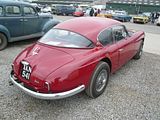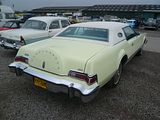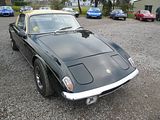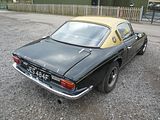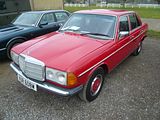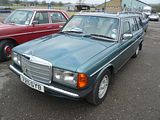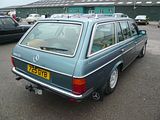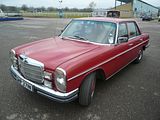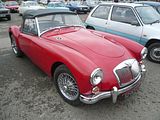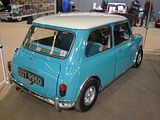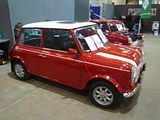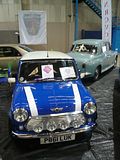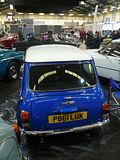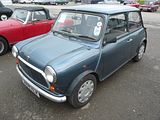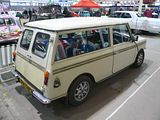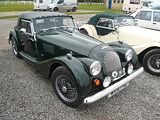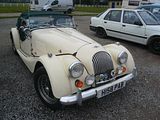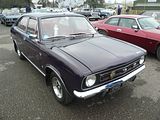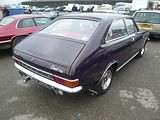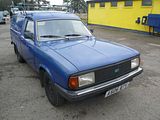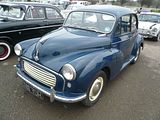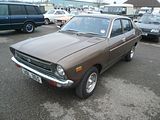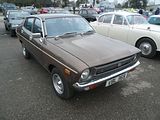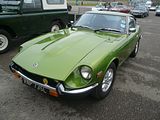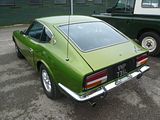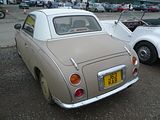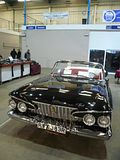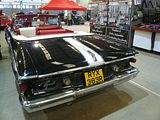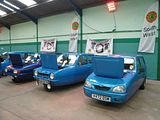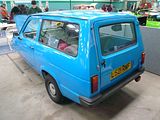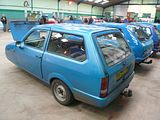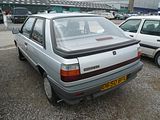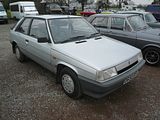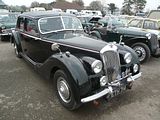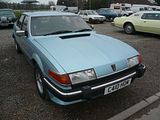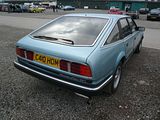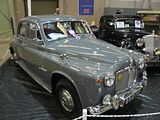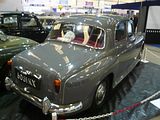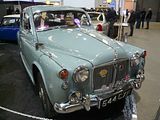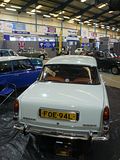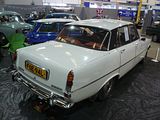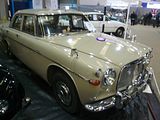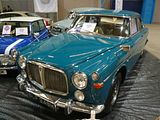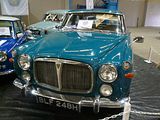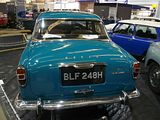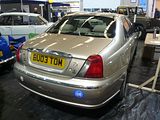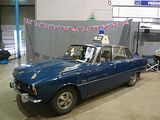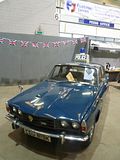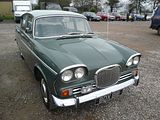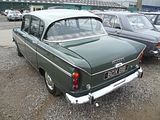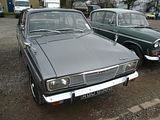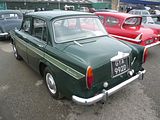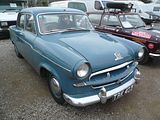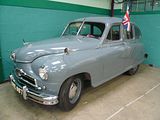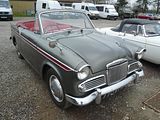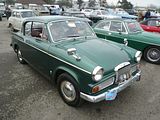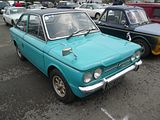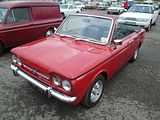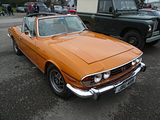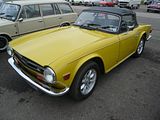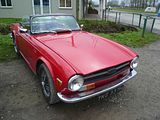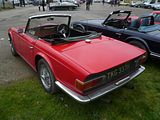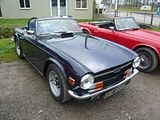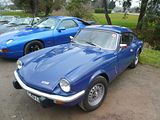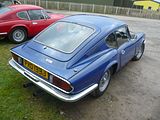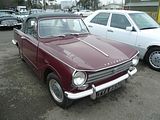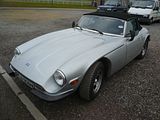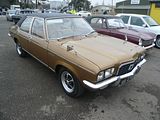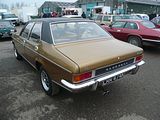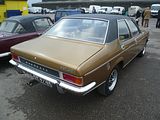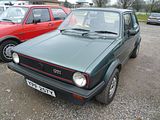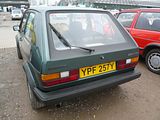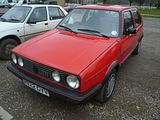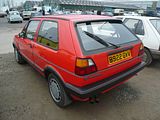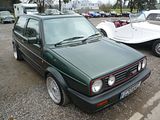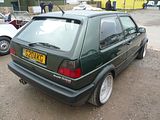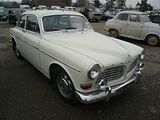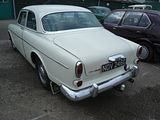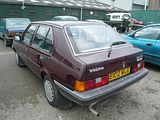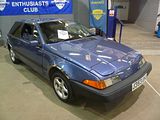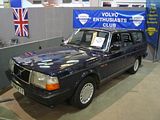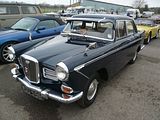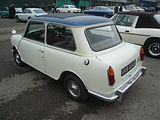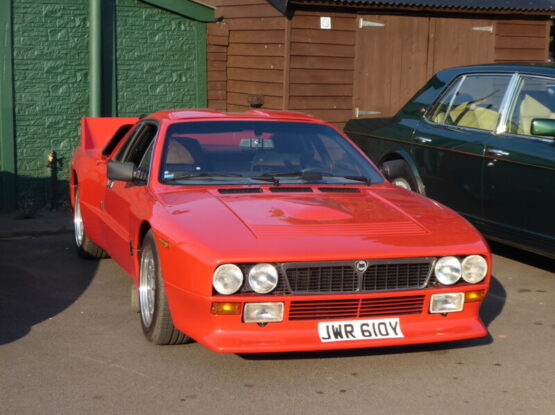An Autojumble held in the rather primitive and draughty sheds that comprise the main buildings at the Bath and West Showground just outside Shepton Mallet, in mid February does not sound like the most compelling event for the diary, unless you are on the search for that elusive part and need to rummage among the stalls. However, I happen to know from previous years that the title of the event is somewhat misleading. Whilst it is true that there is a sizeable Auto Jumble, a couple of the halls are usually allocated to Car Club displays, and many of the attendees get into the spirit of things by bringing their classic car and parking in a specially reserved area just outside the indoor attractions. In many ways, this is not that different from how the Bristol Classic Car Show used to be, when it was held at this time of the year and before it grew to its current size. With the weekend chores as complete as they were ever going to be, and the prospect of a dry if rather nippy afternoon, I headed down to Shepton Mallet to see what the 2015 event could offer. Just as I expected, there was a large assembly of all manner of classic, old and rare cars outside, and some indoor displays, with one standout rarity which, had I known it was to be there, would have made the trip worthwhile even if there was nothing else to see apart from autojumble. Here are the highlights:
AC
A trio of Cobra-styled cars were parked all together, and a striking sight they made. Needless to say, when they were all fired up ready to depart. the looks were a mere nothing compared to the noise they all made!
APOLLO
By some margin, this has to be the rarest car at the event. Some would doubtless mistake it for some E Type derivative, as from the back, there is a certain resemblance, but this is actually an American car, albeit with an Italian styled body. The Apollo project was the dream of a young California engineer, Milt Brown, who wanted to build an American answer to European GTs, such as the Aston Martin DB4 and Ferrari coupes. Intrigued by the new lightweight 3.5 tlire Buick engine which put out 190 bhp, Brown managed to agree a deal with GM to supply not just the engine, but other chassis components for his new car, which left with , Brown set about finding a coachbuilder, and at the Monaco Grand Prix in 1960, he met Frank Reisner, a former chemical engineer born in Hungary, raised in Canada and educated in America. Reisner had been on holiday in Italy in 1959, and decided that he loved Turin and had set up shop there as Intermeccanica producing tuning kits for Renaults, Peugeots, and Simcas. The two struck a deal to produce cars, making an announcement in 1962 of what was to be called the Apollo GT, which would combine the 3.5 litre Buick V8 engine, a four speed manual gearbox and suspension from the Buick Special with Italian styling. Intermeccanica made and trimmed the steel bodies in Turin and then sent them to Oakland, California, where the drive train was installed. The prototype’s design was by Milt Brown’s friend, Ron Plescia, but the nose was too long and the rear vision limited, so Reisner commissioned former Bertone stylist Franco Scaglione to revise it. The finished car, launched as the Apollo 3500GT, and sold by Brown’s International Motorcars of Oakland, was priced at $6000 and with elegant italianate looks and a top speed claimed to be 150 mph, the automotive press couldn’t stop talking about it. It was applauded by Hot Rod, Road & Track and Car and Driver as a ‘consummate sports car’, mainly for its styling and craftsmanship.Road & Track, in November 1963, praised its comfortable space even for taller passengers. Hot Rod also praised the workmanship of the Apollo in 1964, believing it to be of the highest quality. The interior was considered to be comparable to cars costing twice that of the Apollo. Science and Mechanics magazine gave the Apollo high praise and said it was ‘comparable to the Ferrari 2+2, Aston Martin DB-4 and the Corvette Sting Ray. The Apollo was considered to be the ‘right car at the right time’, lacking only two ‘all-essential ingredients’, money and marketing. With such a high Buick content in the car, it had been hoped to sell the Apollo through Buick dealers, but GM objected and the young company was left with no distribution network. Furthermore, Brown had priced the cars below cost, and International Motor Cars soon faced bankruptcy. That was in mid 1964, having sold 42 cars (40 coupes and one spyder, including the prototype). IMC then made a contract with Reisner (to keep his operation going) allowing Intermeccanica to supply body/chassis units to Fred Ricketts, owner of Vanguard Industries, an aftermarket supplier of auto air conditioners in Dallas, Texas. Vanguard sold it as the Vetta Ventura. The intent was to give IMC time to find new financing as well as keep Intermeccanica alive. A prototype 2 + 2 was shown in New York in 1965. It was shown again in 1966 as the Griffth GT. Vanguard built only 11 cars, with shop foreman Tom Johnson purchasing the leftover 11 body/chassis units and completing them as late as 1971. A third attempt to produce the Apollo was by attorney Robert Stevens. His Apollo International company of Pasadena, California completed only 14 cars, with foreman Otto Becker finishing another six. Four body chassis/units were never claimed by Apollo International and were sold by US Customs to Ken Dumiere. Reisner later developed projects such as the Griffith, the Murena GT, and the Italia by Intermeccanica. Intermeccanica went on to produce the Veltro 1500, the Griffin (which was a version of the prototype Apollo 2+2), the Phoenix, and the Omega among others.
AUSTIN
The A90 Atlantic was launched in 1949, and was aimed primarily at the important US export market. A large and heavy car, with a lumbering 6 cylinder engine which meant that it was not that rapid, it struggled for sales, with just under 8000 made before production ended in 1952. You see these cars more frequently in open topped guise, so this closed Coupe was a real rarity indeed.
Far more common, and indeed commercially successful when new, was the little A35, a 1950s version of the Seven, aimed at those who wanted cheap motoring.
The A90 name was used again in 1955 with the launch of the Westminster. This was a 6 cylinder car, based on the 4 cylinder A50 Cambridge, but with a longer front end to accommodate the extra length of the inline engine. Competing against the Ford Zodiac and Vaxuhall Cresta of the day, this was a rather less glitzy car, which means that it tends to have less appeal now than those rivals, as they evoke the era so much more strongly.
Based on the A50/55 Cambridge of the 1950s, a Van and Pickup model was introduced in 1957. Sold initially as an Austin, this was a popular mid-sized commercial vehicle that was kept in production until 1971. The styling did not change much, but the larger B Series engine was put under the bonnet, making the A60 Van and Pickup from 1963. A Morris version was added to the range, and the last models all bore these badges when BL decided to remove the Austin badge from their commercial vehicles.
BMW
Although there are now vast numbers of BMWs on our roads, back in the 1980s when this E28 model 5 series car was new, that was not the case. BMWs then were revered as a car that was a cut, and a significant price, above what people could reasonably expect to drive, and so they were quite rare. Very few of them have survived, so this nicely presented 520i was a reminder of a time when you did not see 5 series every few minutes.
The long running E24 6 Series (produced from 1976 to 1989) is now regarded as an elegant classic, still available for surprisingly little money. Surely the values of cars like this 635CSi will start to rise to match those of the Mercedes and other cars of the era?
CADILLAC
One of the largest cars present was this Coupe de Ville from 1976, a time when Cadillacs featured 8.2 litre V8 engines and were as large as they ever got.
Ten years its senior was a Sedan de Ville that was displayed on the Attwell Wilson Motor Museum stand.
CITROEN
Not surprisingly, this DS21 was attracting plenty of attention (I had quite a wait to get a picture devoid of people!), and who can wonder why, when the car is such an elegant and futuristic machine as this.
Much rarer, even though it is 10 years newer, was this GS Estate. This one is clearly unrestored, with varying shades of paint on some of the body panels, but when did you last see one? The GS was a brave effort at a family car with a tiny 1015cc flat four engine when rivals would have had 1300 or even 1600cc, and the hydropneumatic suspension was quite unlike that in any other car of the time. As well as giving the car an amazing ride, it also meant that there was a large, wide and deep luggage space.
COMMER
A much loved example of the little Commer Van that was based on Hillman’s Imp was presented as one of a series of Imp-based cars lined up in a row.
DAIMLER
Nothing like as common as the Mark 2 Jaguar on which it was based, was the V8 engined Daimler 250. Launched in 1962, this car combined the 2.5 litre V8 Daimler engine from the SP250 “Dart” sports car and (initially) an automatic gearbox, and the traditional Daimler fluted radiator grille with the body from the Jaguar to create a car with a very different character. For years it has lived in the shadow of the commercially more successful Jaguar, but recently the market has woken up to the charms of this model.
DELLOW
There were a couple of these Dellows present. Built in the late 1940s, these cars were based on readily available and cheap Ford Popular componentry, but with an open topped two seater roadster body, making them surprisingly brisk. They were popular for use in amateur motor sport.
FERRARI
Sole Ferrari at the event was this 430 Spider.
FIAT
The long running and rather pretty 124 Spider was never officially sold in the UK. but over the years quite a few of them have found their way here. Many of them have come in from America, which took the lion’s share of production, and which was responsible for the car surviving well into the 1980s, passing its 20th birthday, and this is one of those. A mid 1970s car, its lines were not really improved by the large US impact absorbing bumpers or the large side indicator repeater reflectors, but even so, this would be a fun car to have tucked away in the garage.
It took a long time to get the mid-engined X1/9 to the UK with right hand drive (though Radbourne Racing did bring in a small number of cars and convert them before official imports started), with the first cars going on sale in 1977. Not long after, the purity of lines of the car were challenged by the larger bumpers that were fitted, as well as a raised engine cover to clear the larger 1500cc engine, so early 1300 cars are quite rare in the UK. Here is one.
FORD
Of the four generations of Zephyr, it is the last, the Mark IV model that you encounter least frequently these days, even though it was produced for 6 years, which is as long or longer than any of its antecedents. This one never quite hit the spot when new, with its long bonnet and stubby tail leading many to conclude that the styling was not that well balanced. The handling was often “interesting”, too, but it did offer a lot of space and the other Ford attributes of painless ownership and affordability. It was quite a surprise, therefore, to find two example of the Mark IV here.
The Mark IV range of Zephyr and Zodiac models was followed by an all new design with different names, in April 1972: the Granada, and for the cheaper cars, a return of the Consul name. This is one of the latter, in very period Daytona Yellow. Could you imagine buying an executive car in this colour now?
There was a Mark 2 car present outside as well, this being the top of the range Zodiac, which combined two tone paint and extra trim with the 2.6 litre straight six engine to create a car that many of the era would have longed for, but simply not be able to afford new.
Also representing the Mark 2 was this fabulous Farnham-converted Estate car. Ford did not make their own Estate models, so if you wanted the extra utility, you had to go to a coachbuilder. A small number of these were produced, and just a handful survive. I first saw this car at this event a year ago, where it stole the show, and it still looks absolutely stunning now.
By the 1980s, the large Ford was still badged Granada in the UK, though it had taken on the Scorpio name in the rest of Europe. This is a conservative part of the market, which is why Ford kept the name, but they did venture away from the formula of a three-box saloon with a hatch model with this car in 1985. It did not take long before the proverbial bets were hedge with a traditional saloon being added to the range, and this is a nicely presented example of that, seen in top of the range Scorpio trim.
In the halls, there was a stand for the Classic and Capri Owners Club, with three cars on show, two of the former and one of the latter. The red Capri was used in the film Telstar, and there was some background material surrounding this in the car, for those who were interested.
The Norton Radstock Vehicle Club had an all Ford display, with an Escort Mexico joined by a couple of Mark 2 Cortina models. One was the much loved 1600E, and the other a Savage.
There are a surprising number of old American cars tucked away in the UK, and they all create lots of interest whenever they are shown, especially those from the 1950s to 1970s, an era of styling excess, lots of chrome and just sheer physical size. This 1958 Fairlane is a case in point. Vast on the outside, there’s not that much more space inside than you would have found in a Zephyr of the era, but there’s lots more for the eye to look at, with all sorts of styling details and embellishments.
More familiar is the Mustang, of course, and this is one of the relatively models.
JENSEN
541
LINCOLN
Another slice of Americana came with this leviathan Continental Mark IV. By the time this was built in the late 1970s, the Continental had long moved from being a stylish luxury car to being just a rather large and brash machine, and with dwindling sales, it was no surprise that this interpretation was the last, with follow-on models down-sized quite significantly. Now. of course, they have nothing like the appeal of this, with its false spare wheel cover on the boot lid, vinyl roof and rear side porthole sized windows, and that;s before you admire the period interior.
LOTUS
The Plus 2 was a larger car than the Elan on which it was based, which meant that there was just about space to squeeze in two small rear seats.
MERCEDES-BENZ
The W123 range of Mercedes cars from the late 1970s and early 1980s epitomise what the Germans call “youngtimer classics”. These cars were not exactly exciting when new, as even when fitted with the 2.8 litre fuel injected six, as was the case for the 280TE Estate model shown here. they were far from fast, but the quality of engineering was second to none and they now exude a timeless elegance that so completely eludes the stylist producing the latest Mercedes models.
Parked alongside the 280TE was an example of the previous design, the so called “New Generation” W114 model.
MG
MGA
MINI
No surprise to find a number of examples of the classic Mini on display, ranging from some Cooper models that were shown indoors to some other variants parked up outside.
A late model Clubman Estate featured on one of the other stands.
MORGAN
Morgan owners are a hardy breed, so no surprise to see several of these British classics parked up even though it was hardly a warm day.
MORRIS
Despite the best efforts of Top Gear, who have destroyed a number of survivors in recent years, there are still a reasonable number of Marina models left in the UK, especially when you bear in mind that the car was not viewed with much affection when it was new. There were a couple of facelifts applied, in the hope of keeping the model fresh when there was not enough money to get a replacement into production, the second of which came in 1978 when the big news was the replacement of the 1.8 litre B Series engine with the 1.7 litre O Series, as well as some cosmetic changes which included new plastic bumpers. Very few of these cars survive so this 1.3 litre Coupe model is particularly rare now.
In a rather better state of repair was this earlier 1.8 TC Coupe. This car appeared recently in one of the classic car magazines, and the proud owner had the article displayed in the window of this nicely turned out car.
Third variant of the Marina family was this Ital Van. Once a common sight for those who wanted a small workhorse that was slightly larger than an Escort Van, its main UK rival, these all had a hard life and so almost all wore out and were scrapped. This one was far from pristine, but still nice to see.
Older. but far more common, is the Morris Minor, and with a good survival rate of these cars, it was no surprise to find a few of them parked up in the display area.
NISSAN/DATSUN
Launched in the autumn of 1973, the Datsun Sunny 120Y is credited with being one of the cars that really put the Japanese marques on the map. Well kitted out, with a radio as standard, and well built so it was reliable (if not exactly well protected against rust), this was everything that British buyers were looking for, and not getting with Escorts, Viva and Allegros, and it soon found a place in the Top 10 Best Sellers every month. Offered in a range of 2 and 4 door saloons, an estate and a coupe, it was the saloons that captured most of the sales, but very few remain now, so this was quite a find.
The 1969 240Z was quite a revelation to US buyers who deserted their classic British sports cars in droves, in favour of this good looking and reliable car that was fun to drive. It found far fewer customers in Europe, where Japanese cars were still something of an unknown quantity, so early Z models like this are quite rare here. This one lacks the rear spoiler that was added to UK spec cars very soon after the 1971 launch.
Never sold officially in the UK at all, a significant number of the trendy Figaro models came here as grey imports at a time when large numbers of Japanese oddities were finding their way to these shores. Many have now been recycled, but the Figaors live on, with their retro styling and their pastel shades.
PLYMOUTH
This 1961 Valiant Convertible was on the Attwell Wilson Motor Museum stand
RELIANT
You can think what you like – and you probably do! – about the three wheeled Reliant, butt of more jokes and pranks, probably, than any other car, but it has its fans, like everything else. The Owners Club had a quartet of cars showing different versions of what started out as the Robin in 1973, and which survived for over 25 years, variously as the Rialto and then the Robin again, in Hatch and Estate guises. The later styling updates were certainly not an improvement in my opinion.
RENAULT
Another once common sight on our roads was the Renault R11, a family sized hatch version of the 1982 Car of the Year, the worthy but rather dull R9. This well preserved model was in TC trim, which was pretty much at the bottom of the range (there was a cheaper C models in some markets, but not the UK).
RILEY
RM Series
ROLLS ROYCE
Silver Shadow 2
ROVER
This 3500 Vanden Plas EFi model sat at the top of the SD1 range, sharing its fuel injected V8 engine with the more sporting Vitesse version, the one you see most often from this much loved range of cars.
Inside the halls, there was quite a varied collection of Rover models on the Mendip Vehicle Society’s stand, showing the evolution from the pre-war P2 14 through the post-war P4 and P5 cars to a very low mileage P6 2000TC and one of the last models produced, a 75.
Elsewhere. a police spec P6 model 2000TC was on show.
SCOOTERS
A nice display inside the halls of various scooters from the late 1950s and early 1960s.
SINGER
An interesting contrast could be made between these two successive generations of Singer Vogue. Both of course were badge-engineered versions of the less well-equipped but bigger selling Hillman models, based respectively on the Super Minx and the Hunter. To my mind there’s quite a difference between the former, a style which first appeared in 1961 and the latter which emerged just 5 years later.
Gazelle was the cheaper model in the Rootes Group-owned Singer range. That meant it was based on the Minx, but with a slightly more powerful engine and much nicer trim. By the time of the Arrow based cars, it was visually very similar to the Vogue above, but before that, it was a smaller car, as can be seen here. Rootes made frequent updates to their cars, so although the Gazelle dates back to 1956, by the time this was made, a lot was different including the body which was altered for the Series V cars in 1964.
STANDARD
When Standard replaced the Vanguard in 1955 with an all new design, much was made of the fact that the styling was from an Italian design house, the little known (at the time) Vignale. This was the beginning of an association between Standard-Triumph and one designer in particular, Giovanni Michelotti, who went on to pen most of Triumph’s cars in the following decade. The Vanguard was a large 6 cylinder saloon, aimed at the motorist who might otherwise have bought a Westminster or a Morris Isis, a Vauxhall Velox or a Ford Consul.
Inside was an example of the first generation model, styled quite deliberately like American cars of the period.
SUNBEAM
The Rapier was actually the first of the so-called Audax cars from Rootes to appear, launching in early 1955. Sitting at the top of a range of Gazelles and Hillman Minxes, which offered affordable family transport, this was the stylish Coupe model intended to inject some glamour into the range. With a twin carburettor engine, it performed quite well (for its day), and it was a successful rally car. Closed and open topped models were offered, and like the Hillman and Singer versions, a series of annual modifications upgraded the trim, the styling and the mechanicals throughout its production life. Of the two cars here, the Convertible was the earlier model.
As well as the Commer Van, there were a couple of examples of the Sunbeam Stiletto in the line of Imp-based cars. Both of these are cars that can be seen frequently at all manner of events in the South West.
TRIUMPH
The Stag came in a variety of colours during its 7 year production run, many of them quite bright in hue, as was common at the time. You see most of the different shades offered whenever there is a sizeable gathering of this Grand Tourer, but one of the rarest colours is this – which I happen to rather like – called Topaz, a sort of orange colour.
There were several of the popular TR model here, with the TR6 the best represented.
Alongside there TRs were a couple of Mark 3 GT6 cars. These combined the underpinnings of the Spitfire, but with the 2 litre inline 6 cylinder engine and a closed coupe body to rival the MGB GT. They were nothing like as popular as the MG, and production ceased in 1973, a full 8 years before the similar Spitfire was deleted.
Elsewhere was a nice Herald 13/60 Convertible, a car which had plenty of fans when new, as the Herald was easy to drive, very manoeuverable, with a turning circle to rival that of the London Taxi, and in this guise, the benefits of open air motoring, something which no other volume car offered.
TVR
The 3000S was an open topped version of the long running M Series and Taimar models, that was launched in 1978. It was only produced for a couple of years before TVR replaced their entire range with the wedge shaped Tasmin cars.
VAUXHALL
With the demise of the PC Cresta and Viscount models in early 1972, the Ventora became the top model in Vauxhall’s range. Fitted with a 3,3 litre V6 engine, in the Victor body, and with rather more in the way of equipment, these cars sold in small quantities compared to the cheaper 4 cylinder Victor and VX4.90 versions. A few have survived, though, as I recall seeing another of these FE-generation cars at Brooklands on New Year’s Day.
VOLKSWAGEN
A trio of Golf GTi models were parked alongside each other. One was a Mark 1, and the other were Mark 2s, showing the careful styling evolution that was made between these model iterations. One of the Mark 2s had a G60 badge on the back, suggesting it might have had the innovative (and troublesome) G-lader supercharger under the bonnet. If it is an original and genuine G60 (and there are plenty that are not!), then it is a rare car indeed.
VOLVO
Although Volvo introduced a new model, the 144, to replace the by then 10 year old “Amazon” design, the older car continued in production for some years alongside its new stablemate. Offered in a bewildering array of different model types over the years, the tough Volvo came as a 2 or 4 door saloon as well as an estate, and with a wide variety of engines. This is a relatively late model., badged 123GT.
I don’t think anyone would have said when this car was new that it was a future classic. The first 343 models, an inheritance from the Daf acquisition, came with the legendary Variomatic transmission, and with a 1.4 litre Renault sourced engine in a relatively large body, as well as an optimistic price tag, they looked like the would struggle in the market. Volvo put a conventional transmission in the car in late 1978 and then gradually refined it, adding 5 door models, a 4 door saloon and the option of more powerful 2 litre and 1.7 litre engines. Before long this solid, but hardly excited car was a feature of the Top Ten best sellers. Even so, its reputation was far from that of being a car for the enthusiast. How, however, with survivors down to a relatively small number, it has its place in history like just about any old car and this one – in a very nice condition – was attracting plenty of interest.
In the halls, the Volvo Enthusiast Club had a three car stand, with a 480ES and a 240 Estate from the 1980s joined by a P1800 Coupe.
WOLSELEY
With the Farina styled family cars that covered all the BMC marques, badge engineering reached its zenith. The Wolseley 15/60 was the first of the range to launch, in late 1958, and it was quickly followed by Austin, Morris, MG and Riley versions of the same car, each aimed at a slightly different point in the marque and at those customers who had brand loyalty (which was much more evident in the 1950s and 1960s than it is now). The tail fins were very much of their period, but once the feature declined in popularity, they were toned down in the 1962 facelift of the range.
There was also an example of the Hornet, the booted version of the Mini that was launched in 1961 along with the visually similar Riley Elf. These were almost concepts ahead of their time, as sales were relatively low. Launch something like this now, and as has been shown with premium-badged small cars, and they fly out of the showroom.
This event lived up to my expectations. There was indeed far more to see than just halls of autojumble, and as such, it was well worth the hour each way to Shepton Mallet. There was lots that I enjoyed seeing, with the highlight being that Apollo, a car which I had hitherto only ever read about. It just goes to show that you never know what you will find at even relatively small, local and low key events.

